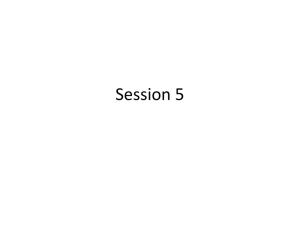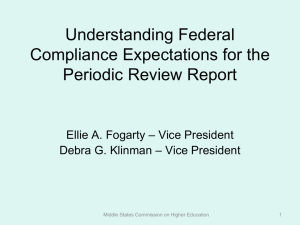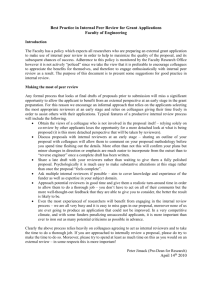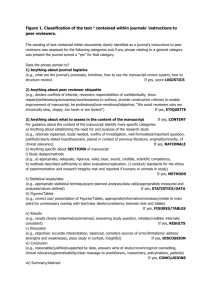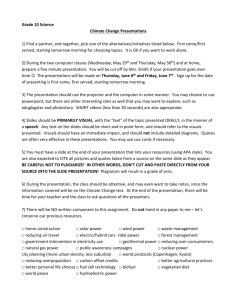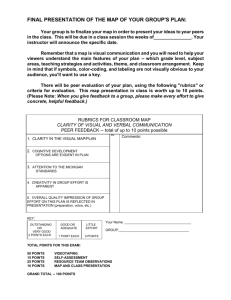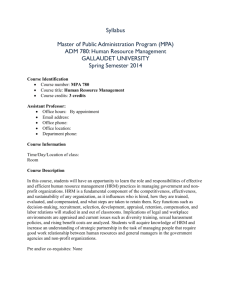QMScoringandFeedback
advertisement
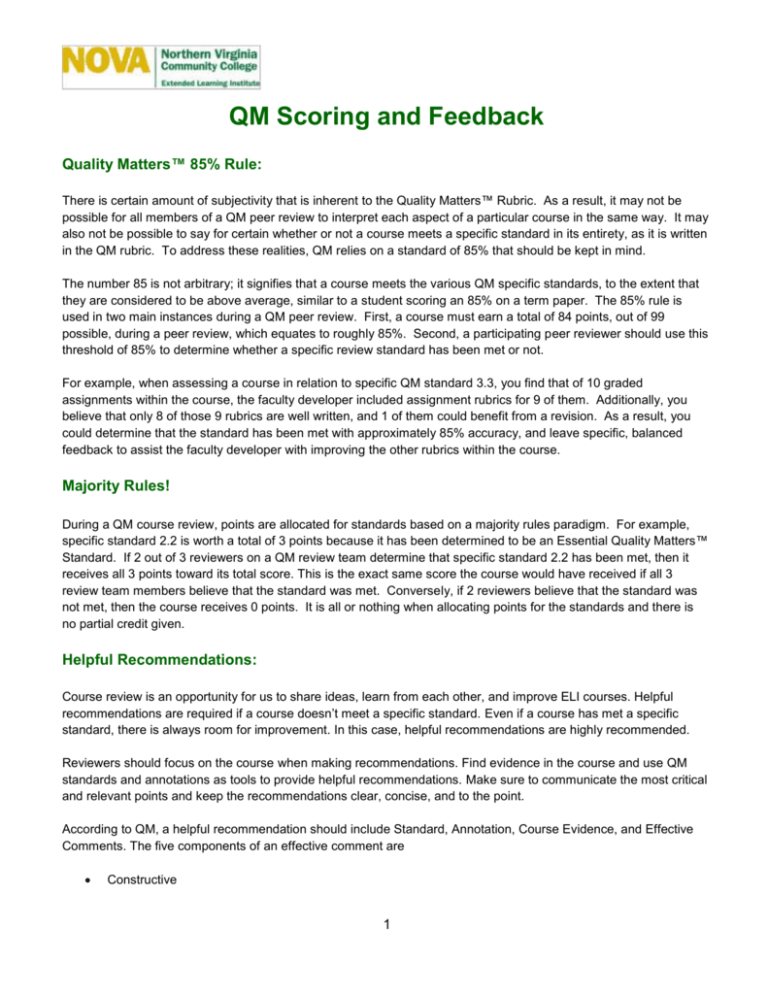
QM Scoring and Feedback Quality Matters™ 85% Rule: There is certain amount of subjectivity that is inherent to the Quality Matters™ Rubric. As a result, it may not be possible for all members of a QM peer review to interpret each aspect of a particular course in the same way. It may also not be possible to say for certain whether or not a course meets a specific standard in its entirety, as it is written in the QM rubric. To address these realities, QM relies on a standard of 85% that should be kept in mind. The number 85 is not arbitrary; it signifies that a course meets the various QM specific standards, to the extent that they are considered to be above average, similar to a student scoring an 85% on a term paper. The 85% rule is used in two main instances during a QM peer review. First, a course must earn a total of 84 points, out of 99 possible, during a peer review, which equates to roughly 85%. Second, a participating peer reviewer should use this threshold of 85% to determine whether a specific review standard has been met or not. For example, when assessing a course in relation to specific QM standard 3.3, you find that of 10 graded assignments within the course, the faculty developer included assignment rubrics for 9 of them. Additionally, you believe that only 8 of those 9 rubrics are well written, and 1 of them could benefit from a revision. As a result, you could determine that the standard has been met with approximately 85% accuracy, and leave specific, balanced feedback to assist the faculty developer with improving the other rubrics within the course. Majority Rules! During a QM course review, points are allocated for standards based on a majority rules paradigm. For example, specific standard 2.2 is worth a total of 3 points because it has been determined to be an Essential Quality Matters™ Standard. If 2 out of 3 reviewers on a QM review team determine that specific standard 2.2 has been met, then it receives all 3 points toward its total score. This is the exact same score the course would have received if all 3 review team members believe that the standard was met. Conversely, if 2 reviewers believe that the standard was not met, then the course receives 0 points. It is all or nothing when allocating points for the standards and there is no partial credit given. Helpful Recommendations: Course review is an opportunity for us to share ideas, learn from each other, and improve ELI courses. Helpful recommendations are required if a course doesn’t meet a specific standard. Even if a course has met a specific standard, there is always room for improvement. In this case, helpful recommendations are highly recommended. Reviewers should focus on the course when making recommendations. Find evidence in the course and use QM standards and annotations as tools to provide helpful recommendations. Make sure to communicate the most critical and relevant points and keep the recommendations clear, concise, and to the point. According to QM, a helpful recommendation should include Standard, Annotation, Course Evidence, and Effective Comments. The five components of an effective comment are Constructive 1 Specific Measurable Sensitive Balanced For example, the recommendation below includes all of the five components. The Overview, Study, Dialogue, and Assignment sections in each Period promote student achievement of the stated goals and learning objectives. For example, each Period identifies student outcomes; Study identifies the chapter/article readings; Dialogue requires students to engage in a group discussion; and Assignment requires students to complete an exercise and/or project. These activities are primarily textbased. You may want to consider adding (or linking) slide presentations or videos from web sites for a change of pace and also to accommodate visual learners. Adding learning activities in varied formats helps to facilitate students’ achievement of the learning outcomes. Constructive Providing solutions Specific Being specific about what is being recommended Measurable You may want to consider adding (or linking) slide presentations or videos from web sites for a change of pace and also to accommodate visual learners. Adding learning activities in varied formats helps to facilitate students’ achievement of the learning outcomes. For example, each Period identifies student outcomes; Study identifies the chapter/article readings; Dialogue requires students to engage in a group discussion; and Assignment requires students to complete an exercise and/or project. These activities are primarily text-based. …adding (or linking) slide presentations or videos from web sites for a change of pace and also to accommodate visual learners. Providing solutions that can be implemented Sensitive You may want to consider…. Using positive tone Balanced The Overview, Study, Dialogue, and Assignment sections in each Period promote student achievement of the stated goals and learning objectives. Including comments on the strengths 2
